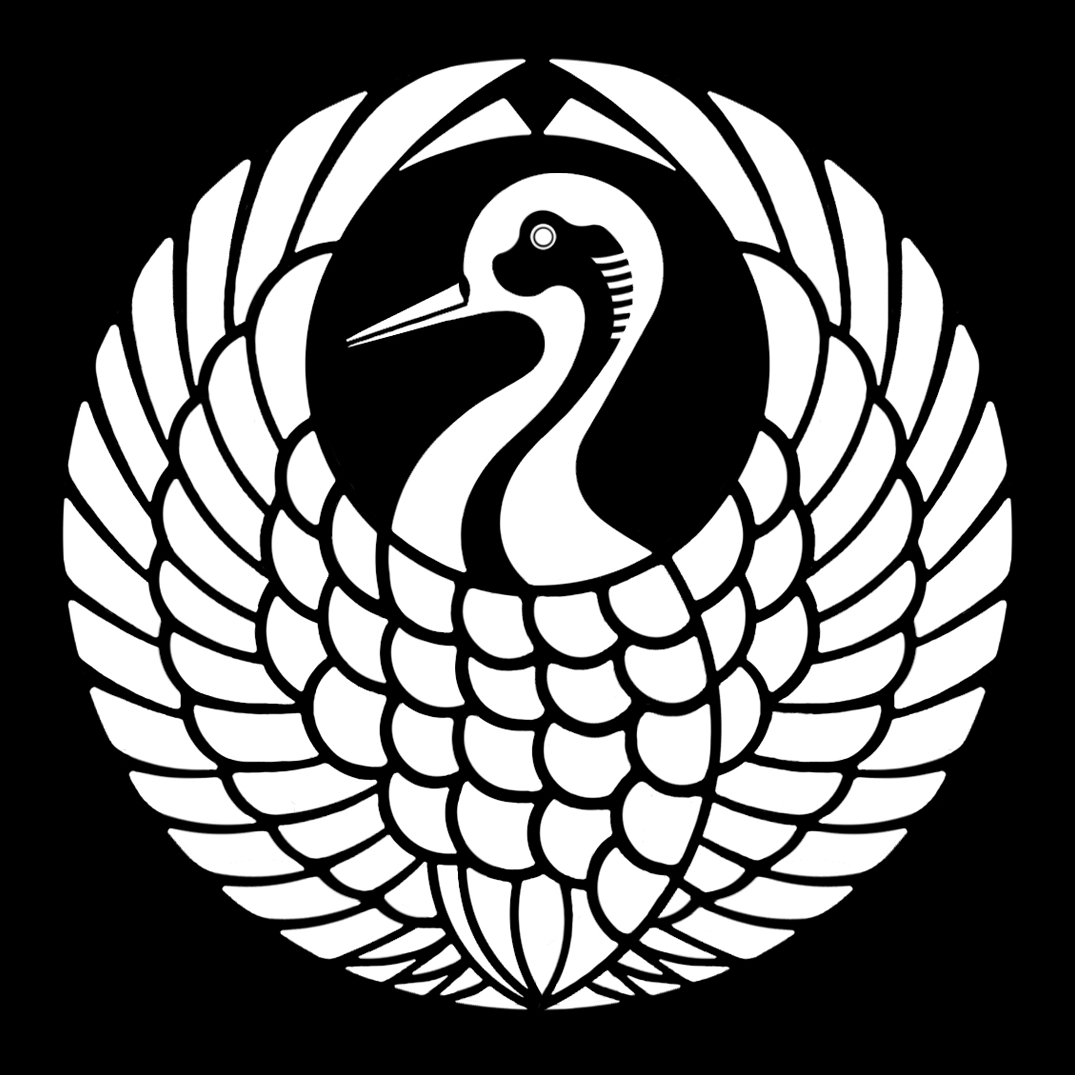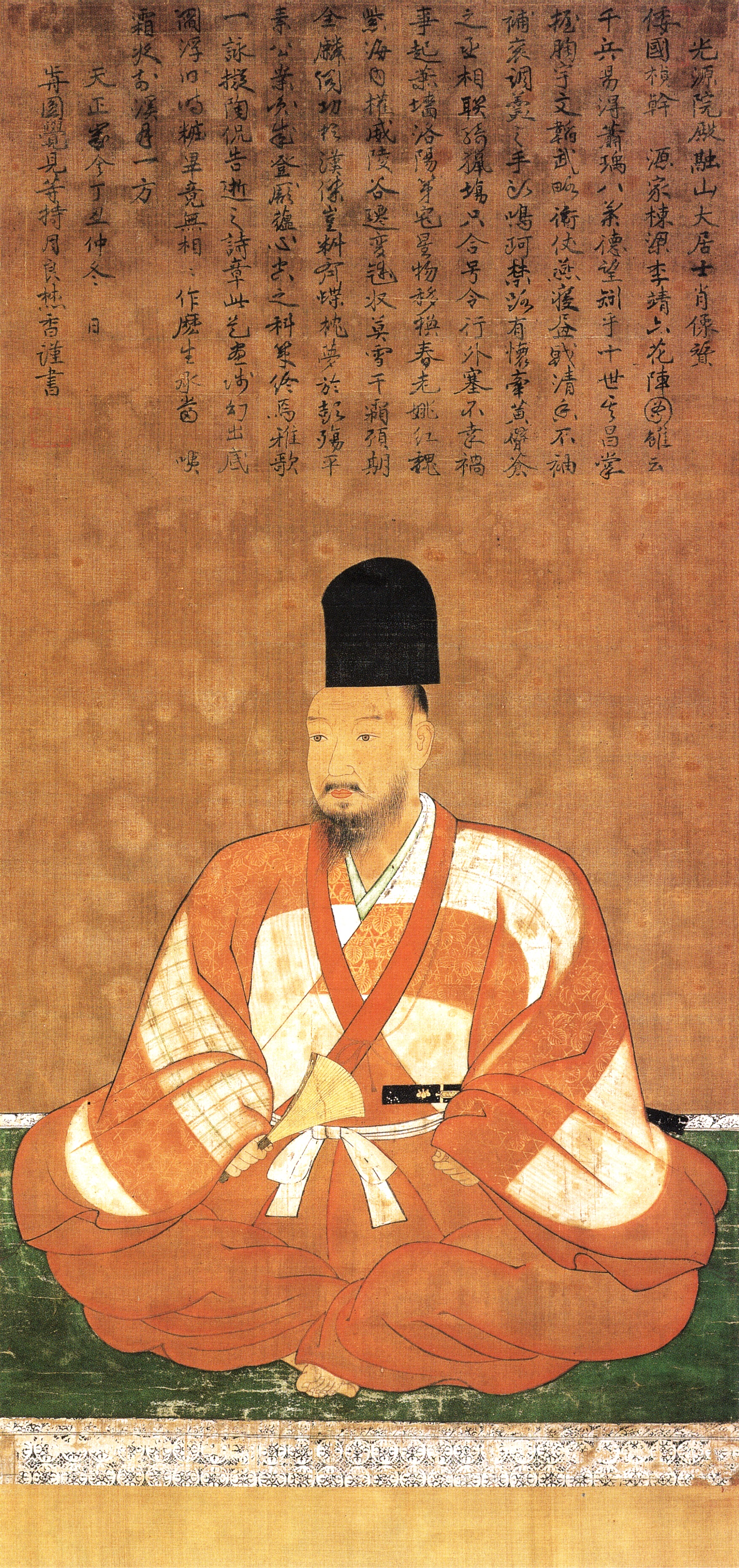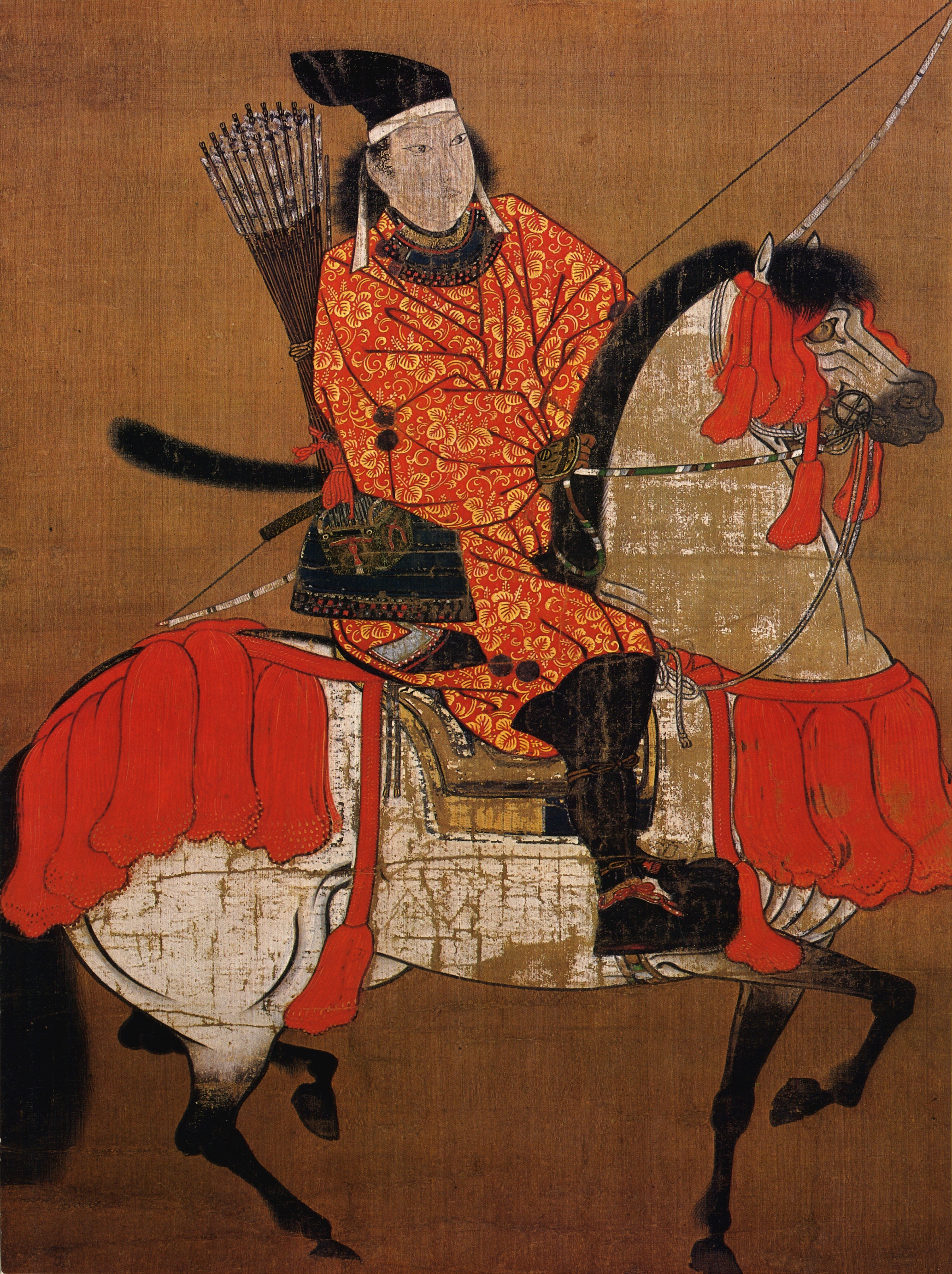|
ŇĆmidaidokoro
''ŇĆmidaidokoro'' (Ś§ßŚĺ°ŚŹįśČÄ) was a title that can only be given to the past ''shŇćgun''s official widow or retired ''shŇćgun''s chief consort/wife. These women had an extraordinary or considerable political power behind the scenes, leading much of the court's events and other events that impacted Japanese history. During the Edo period she resided in ŇĆoku, third corridor (sannomaru). Kamakura period * HŇćjŇć Masako, daughter of HojŇć Tokimasa, wife of Minamoto no Yoritomo and mother of Minamoto no Yoriie and Minamoto no Sanetomo * Bomon Nobuko (1193‚Äď1274), daughter of Bomon Nobukiyo and wife of Minamoto no Sanetomo * Konoe Saiko (b. 1241), daughter of Konoe Kanetsune, wife of Prince Munetaka and mother of Prince Koreyasu Muromachi period * Akahashi Toshi (1306‚Äď1365) wife of Ashikaga Takauji and mother of Ashikaga Yoshiakira * Shibukawa Koshi (1332‚Äď1392), daughter of Shibukawa Yoshisue and wife of Ashikaga Yoshiakira * Hino Nariko (1351‚Äď1405),wife of Ashikaga Yoshimits ... [...More Info...] [...Related Items...] OR: [Wikipedia] [Google] [Baidu] |
Oeyo
, , or : 1573 ‚Äď September 15, 1626) was a noblewoman in Japan's Azuchi‚ÄďMomoyama period and early Edo period. She was a daughter of Oichi and the sister of Yodo-dono and Ohatsu. When she rose to higher political status during the Tokugawa shogunate, she took the title of "'' ŇĆmidaidokoro''". Following the fall of the Council of Five Elders, Oeyo and her sisters were key figures in maintaining a diplomatic relationship between the two most powerful clans of their time, Toyotomi and Tokugawa. Due to her great contributions to politics at the beginning of the Edo period she was posthumously inducted into the Junior First Rank of the Imperial Court, the second highest honor that could be conferred by the Emperor of Japan. Oeyo married three times, first to Saji Kazunari, her cousin, then to Toyotomi Hideyoshi's nephew, Toyotomi Hidekatsu. She had a daughter with Hidekatsu named Toyotomi Sadako, who later married KujŇć Yukiie. Her third and last husband Tokugawa Hidetad ... [...More Info...] [...Related Items...] OR: [Wikipedia] [Google] [Baidu] |
Hino Tomiko
was a prominent figure during the Muromachi period and the beginning of the Sengoku period. She was daughter to Hino Shigemasa and was the official wife of Ashikaga Yoshimasa, the eighth ''shŇćgun'' of the Ashikaga shogunate (at first Tomiko was betrothed to Ashikaga Yoshikatsu the seventh shŇćgun but Yoshikatsu died at the age of 10), and the mother of Ashikaga Yoshihisa, the ninth ''shŇćgun''. Her efforts during the succession dispute are seen as one of the causes of the ŇĆnin War and led to the beginning of the Sengoku period. Early life Hino Tomiko was born into the Hino family, a powerful family whose women became consorts to many previous Shoguns. These familial connections enhanced the Hino's power to control the Shogunate Court. Tomiko played an important role in strengthening the Hino family's relationship with the Shogunate and enabling it to grow ever more powerful. When Tomiko's social and political status rose after her marriage to Ashikaga Yoshimasa, she ... [...More Info...] [...Related Items...] OR: [Wikipedia] [Google] [Baidu] |
:Category:Japanese Words And Phrases ...
{{Commons Words and phrases by language Words Words Words A word is a basic element of language that carries meaning, can be used on its own, and is uninterruptible. Despite the fact that language speakers often have an intuitive grasp of what a word is, there is no consensus among linguists on its ... [...More Info...] [...Related Items...] OR: [Wikipedia] [Google] [Baidu] |
Hino Tokimitsu
Hino may refer to: Places Estonia * Hino, P√Ķlva County * Hino, V√Ķru County ** Lake Hino Japan * Hino, Shiga * Hino, Tokyo * Hino, Tottori ** Hino District, Tottori ** Hino River Transportation * Hino Motors, a Japanese truck manufacturer owned by Toyota ** Hino Pakistan * Hino Station (other), railway stations in Japan: ** Hino Station (Nagano), a railway station Susuka, Nagano, operated by Nagano Electric Railway ** Hino Station (Shiga), a railway station operated by Ohmi Railway ** Hino Station (Tokyo), a railway station operated by East Japan Railway Company Other uses * Hino (surname) Hino (written: or lit. "sun field" or "fire field") is a Japanese surname. Notable people with the surname include: *, Japanese video game designer and businessman *, Japanese soldier *, Japanese manga artist, author of ''Hino Horror'' *, Japanes ..., a Japanese surname * H√©-no, also called Hino, an Iroquois thunder spirit See also * Heino (other) {{disa ... [...More Info...] [...Related Items...] OR: [Wikipedia] [Google] [Baidu] |
Tokugawa Hidetada
was the second ''shŇćgun'' of the Tokugawa dynasty, who ruled from 1605 until his abdication in 1623. He was the third son of Tokugawa Ieyasu. Early life (1579‚Äď1593) Tokugawa Hidetada was born to Tokugawa Ieyasu and the Lady SaigŇć on May 2, 1579. This was shortly before Lady Tsukiyama, Ieyasu's official wife, and their son Tokugawa Nobuyasu were executed on suspicion of plotting to assassinate Oda Nobunaga, who was Nobuyasu's father-in-law and Ieyasu's ally. By killing his wife and son, Ieyasu declared his loyalty to Nobunaga. In 1589, Hidetada's mother fell ill, her health rapidly deteriorated, and she died at Sunpu Castle. Later Hidetada with his brother, Matsudaira Tadayoshi, was raised by Lady Acha, one of Ieyasu's concubines. His childhood name was , later becoming . The traditional power base of the Tokugawa clan was Mikawa. In 1590, the new ruler of Japan, Toyotomi Hideyoshi enlisted Tokugawa Ieyasu and others in attacking the domain of the HŇćjŇć in what bec ... [...More Info...] [...Related Items...] OR: [Wikipedia] [Google] [Baidu] |
Azai Nagamasa
was a Japanese ''daimyŇć'' of the Sengoku period known as the brother-in-law and enemy of Oda Nobunaga. Nagamasa was head of the Azai clan seated at Odani Castle in northern ŇĆmi Province and married Nobunaga's sister Oichi in 1564, fathering her three daughters ‚Äď Yodo-dono, Ohatsu, and Oeyo ‚Äď who became prominent figures in their own right. Nagamasa became one of Nobunaga's enemies in 1570 due to the Azai alliance with the Asakura clan, and fought against Nobunaga at major battles including the Battle of Anegawa. Nagamasa and his clan were destroyed by Nobunaga in August 1573, and he committed ''seppuku'' during the siege of Odani Castle. Early life Azai Nagamasa was the son of Azai Hisamasa, from whom he inherited clan leadership in 1560. Hisamasa had been compelled to step down by many of his retainers in favor of his son, Nagamasa. Hisamasa retired, and would later commit suicide along with his son in August 1573. Nagamasa successfully battled both Rokkaku Yos ... [...More Info...] [...Related Items...] OR: [Wikipedia] [Google] [Baidu] |
Ashikaga Yoshiteru
, also known as Yoshifushi or Yoshifuji, was the 13th ''shŇćgun'' of the Ashikaga shogunate who reigned from 1546 to 1565 during the late Muromachi period of Japan. He was the eldest son of the 12th ''shŇćgun'', Ashikaga Yoshiharu, and his mother was a daughter of Konoe Hisamichi (later called , ''Keijuin''). When he became shogun in 1546 at age 11, Yoshiteru's name was Yoshifushi (sometimes transliterated as Yoshifuji); but some years later in 1554, he changed his name to the one by which he is conventionally known today. His childhood name was Kikubemaru (). His younger brother Ashikaga Yoshiaki became the fifteenth ''shŇćgun''. Installed as ''shŇćgun'' After his father, Yoshiharu, was forced to retire in 1546 over a political struggle with Hosokawa Harumoto, Yoshiteru became '' Sei-i TaishŇćgun'', albeit a puppet ''shŇćgun'' like his father. Yoshiteru was only 11 at the time and his investiture ceremony was held at Sakamoto, ŇĆmi Province, outside Kyoto. Yoshiteru had ba ... [...More Info...] [...Related Items...] OR: [Wikipedia] [Google] [Baidu] |
Konoe Hisamichi
was a Japanese ''kugyŇć'' (court noble) of the Muromachi period (1336‚Äď1573). He held the regent position of '' kampaku'' from 1493 to 1497 and from 1513 to 1514. Family He was the son of Konoe Masaie, and the father of Konoe Taneie. A daughter of his was a consort of samurai HŇćjŇć Ujitsuna. Another daughter, later known as Keiju-in, was the wife of Ashikaga Yoshiharu and the mother of Ashikaga Yoshiteru and Ashikaga Yoshiaki "Ashikaga Yoshiaki" in '' The New Encyclop√¶dia Britannica''. Chicago: Encyclop√¶dia Britannica Inc., 15th edn., 1992, Vol. 1, p. 625. was the 15th and final ''shŇćgun'' of the Ashikaga shogunate in Japan who reigned from 1568 to 1573 when he .... References * Fujiwara clan Konoe family 1472 births 1544 deaths {{japan-noble-stub ... [...More Info...] [...Related Items...] OR: [Wikipedia] [Google] [Baidu] |
Ashikaga Yoshiharu
was the twelfth ''shŇćgun'' of the Ashikaga shogunate from 1521 through 1546 during the late Muromachi period of Japan.Ackroyd, Joyce. (1982). ''Lessons from History: The Tokushi Yoron'', p. 332. He was the son of the eleventh ''shŇćgun'' Ashikaga Yoshizumi. From a western perspective, Yoshiharu is significant, as he was shogun when the first contact of Japan with the European West took place in 1543. A Portuguese ship, blown off its course to China, landed in Japan. In 1526, Yoshiharu invited archers from neighboring provinces to come to the capital for an archery contest. Biography His childhood name was Kameomaru (šļÄÁéčšłł). On 1 May 1521, after Shogun Ashikaga Yoshitane and Hosokawa Takakuni struggled for power over the shogunate and Yoshitane withdrew to Awaji Island, the way was clear for Minamoto-no Yoshiharu to be installed as shogun as he enters Kyoto. In 1521, the Hosokawa Takakuni orchestrates the appointment of Yoshiharu as shŇćgun. By 1526, tumultuous ev ... [...More Info...] [...Related Items...] OR: [Wikipedia] [Google] [Baidu] |
Ashikaga Yoshizumi
was the 11th ''shŇćgun'' of the Ashikaga shogunate who reigned from 1494 to 1508 during the Muromachi period of Japan. He was the son of Ashikaga Masatomo and grandson of the sixth ''shŇćgun'' Ashikaga Yoshinori.Titsingh, Isaac. (1834). His childhood name was SeikŇć (śłÖśôÉ), Yoshizumi was first called YoshitŇć (sometimes translated as Yoshimichi), then Yoshitaka. Yoshizumi was adopted by the 8th ''shŇćgun'' Ashikaga Yoshimasa.Ackroyd, p. 298; n.b., ''ShŇćgun'' Yoshimasa was succeeded by ''shŇćgun'' Yoshihisa (Yoshimasa's natural son), then by ''shŇćgun'' Yoshitane (Yoshimasa's first adopted son), and then by ''shŇćgun'' Yoshizumi (Yoshimasa's second adopted son) He was installed by Hosokawa Masamoto as '' Sei-i TaishŇćgun''. He was stripped of the title in 1508 by the 10th ''shŇćgun'' Ashikaga Yoshitane, who became ''shŇćgun'' for a second period of time. Two of Yoshizumi's sons would themselves become ''shŇćguns''.Ackroyd, p. 385 n104; excerpt, "Some apparent contradictio ... [...More Info...] [...Related Items...] OR: [Wikipedia] [Google] [Baidu] |
Ashikaga Yoshihisa
was the 9th ''shŇćgun'' of the Ashikaga shogunate who reigned from 1473 to 1489 during the Muromachi period of Japan.Ackroyd, Joyce. (1982) ''Lessons from History: The Tokushi Yoron'', p. 331. Yoshihisa was the son of the eighth ''shŇćgun'' Ashikaga Yoshimasa with his wife Hino Tomiko. Since the almost 30-year-old ''shŇćgun'' Yoshimasa had no heir by 1464, he adopted his younger brother Ashikaga Yoshimi to succeed him. However, Yoshihisa was born in the next year starting a struggle for succession between brothers that erupted into the ŇĆnin War starting in 1467, beginning the Sengoku period of Japanese history. In the middle of hostilities, Yoshimasa retired in 1473, relinquishing the position of ''Sei-i TaishŇćgun'' to Yoshihisa. Events of Yoshihisa's ''bakufu'' Yoshihisa's shogunal administration begins in 1479. The Kaga Rebellion occurs in 1488 in Kaga Province during his reign. The next year, Yoshihisa dies in camp during campaign against Sasaki Takayori; Yoshimasa res ... [...More Info...] [...Related Items...] OR: [Wikipedia] [Google] [Baidu] |
Ashikaga Yoshimasa
"Ashikaga Yoshimasa" in ''Encyclop√¶dia Britannica, The New Encyclop√¶dia Britannica''. Chicago: Encyclop√¶dia Britannica Inc., 15th edn., 1992, Vol. 1, p. 625. was the eighth ''shŇćgun'' of the Ashikaga shogunate who reigned from 1449 to 1473 during the Muromachi period of Japan. His actions led to the ŇĆnin War (1467‚Äď1477), which triggered the Sengoku period. His reign saw a cultural flourishing in the arts, the development of East Asian tea ceremony, tea ceremony, Zen Buddhism and Wabi-sabi, wabi-sabi aesthetics. Biography Yoshimasa was the son of the sixth shŇćgun Ashikaga Yoshinori. His childhood name was Miharu (šłČśė•). His Seishitsu, official wife was Hino Tomiko. On August 16, 1443, the 10-year-old ''shŇćgun'' Yoshikatsu died of injuries sustained in a fall from a horse. He had been shŇćgun for only three years. Immediately, the ''bakufu'' elevated Yoshinari, the young shŇćgun's even younger brother, to be the new ''shŇćgun''. Several years after becoming shŇćgun ... [...More Info...] [...Related Items...] OR: [Wikipedia] [Google] [Baidu] |



